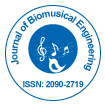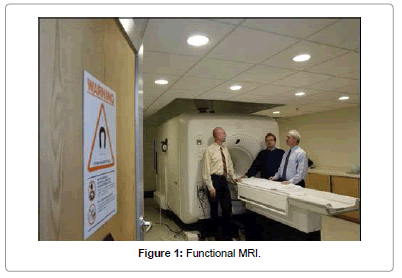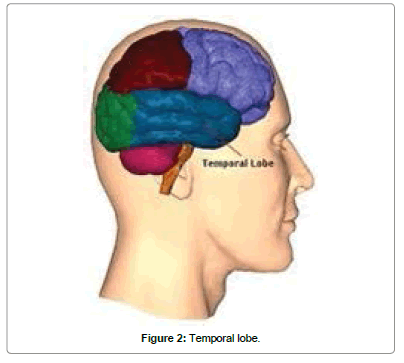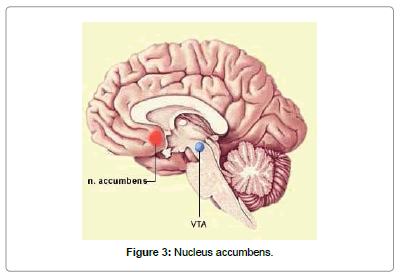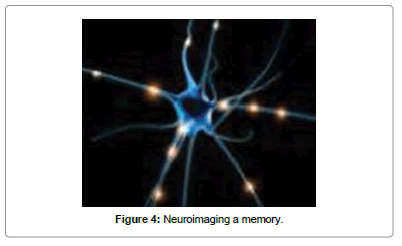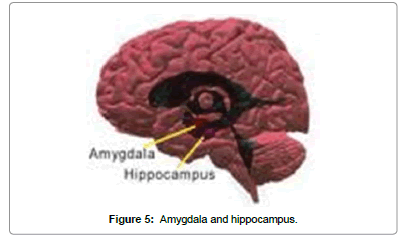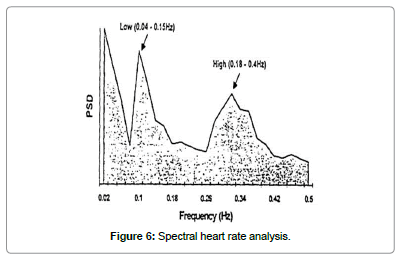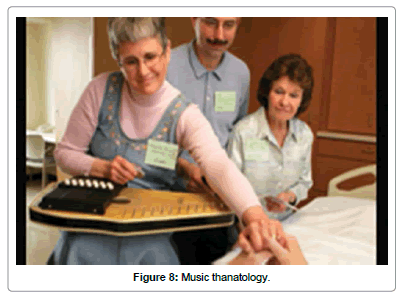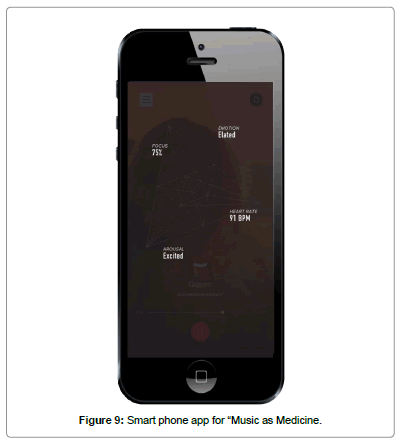Review Article Open Access
Music as Medicine: The Science of How Music Can Help Induce Sleep, Relieves Anxiety and Pain in Patients
Trent W Nichols*
Microbiom Netics, Hanover, PA, USA
- *Corresponding Author:
- Trent W Nichols Jr. MD
CNDD, AMRI
721Ash Dr. Hanover PA 17331, USA
Tel: 717-6335540
E-mail: twnicholpa@comcast.net
Received Date: September 07, 2015; Accepted Date: October 28, 2015; Published Date: November 06, 2015
Citation: Nichols TW (2015) Music as Medicine: The Science of How Music Can Help Induce Sleep, Relieves Anxiety and Pain in Patients. J Biomusic Eng 3:110. doi:10.4172/2090-2719.1000110
Copyright: © 2015 Nichols TW. This is an open-access article distributed under the terms of the Creative Commons Attribution License, which permits unrestricted use, distribution, and reproduction in any medium, provided the original author and source are credited.
Visit for more related articles at Journal of Biomusical Engineering
Abstract
This manuscript was abstracted from a lecture for grand rounds for medical physicians. This paper explores the science of how music can help induce sleep relieves anxiety, and pain in patients. This method has been practiced from decades as a way to treat neurological conditions. Now, advances in neuroscience and brain imaging are revealing what is actually happening in the brain as patients listen to music or play instruments and how the therapy works. It depends upon “frequency following” response, a naturally occurring phenomenon where the human brain has a tendency to change its dominant EEG frequency towards the frequency of a dominant external stimulus. Musical rhythm has been hypothesized to be a zeitgeber (ie pacemaker) with its ability to entrain neurons dependent on the strength of its signal relative to spurious signals from higher neural centers that introduce noise into the central pattern generator.. With fMRI brain imaging, the neuroscience of the effect of music can now be mapped to various regions of the brain. Intense musical emotion described as “thrills and chills” is associated the ventral striatum, amygdala, midbrain and frontal cortex (regions involved in reward, motivation and arousal. The Mozart effect is discussed. Live harp music has been shown to be beneficial in preterm infants in neonatal intensive care is associated with an reduced heart rate and deeper sleep at 30 minutes after therapy parameters. Studies on the efficacy of music therapy (MT) were done on pain and anxiety in children and adults undergoing clinical procedures. Overall MT showed a significant reduction in pain and anxiety. Clinical studies of music in adults undergoing procedures were also found to be efficacious. Music can also be used to help ease the journey of the terminally ill. Future apps for smart phone could predict how “music can truly be uses as medicine!”
Keywords
Music; Anxiety; Pain; Sleep; Brain entrainment; Mozart effect
Background
In neuroscience, there is a phenomenon known as entrainment, which aims to cause brainwave frequency to fall into step with a periodic stimulus having a frequency corresponding to the intended brain-state (for example, to induce sleep) It depends upon a “frequency following” response, a naturally occurring phenomenon where the human brain has a tendency to change its dominant EEG frequency towards the frequency of a dominant external stimulus” [1]. With fMRI (Figure 1) brain imaging, the neuroscience of the effect of music can now be mapped to various regions of the brain. Intense musical emotion described as “thrills and chills” is associated the ventral striatum, amygdala, midbrain and frontal cortex (regions involved in reward, motivation and arousal) [2].
Musical rhythm has been hypothesized to be a zeitgeber (ie. pacemaker) with its ability to entrain neurons dependent on the strength of its signal relative to spurious signals from higher neural centers that introduce noise into the central pattern generator” [3].
Daniel Levitin PhD, neuroscientist, record producer and writer who is currently associate professor at Mc Gill University, Montreal Canada, is credited with fundamentally changing the way that scientists think about auditory memory, showing that long-term memory preserves many of the details of perceptual experience coding process, and with drawing attention to the role of cerebellum in music listening.
The first stages of listening to sounds, is the perception and analysis of tones. Hair cells in the cochlea parse the incoming sound into different frequency bands, sending electrical signals to A1 (primary auditory cortex) telling it what frequencies are present. Regions in the temporal lobe, including the superior temporal sulcus and the superior temporal gyrus on both sides of the brain, help to distinguish the different timbres heard. Regions in the temporal lobe, including the superior temporal sulcus and the superior temporal gyrus on both sides of the brain, help to distinguish the different timbres heard (Figure 2).
The Motor Cortex is where movement, foot tapping, dancing and playing an instrument and nucleus accumbens (NAc) is the center of the brains reward center. It is closely involved with transmission of opioids in the brain and the release of dopamine. The pleasure of listening to music can be blocked with naloxone (Figure 3).
Cerebellum is also involved in movements such as foot tapping, dancing, and playing an instrument and involved in emotional reactions to music. Corpus Callosum connects the left and right hemisphere. Neuroscientist Gottfried Schlaulg has shown that the front portion of corpus callosum (the mass of fibers) is larger in musicians than non-musicians. An increase of gray matter (cell bodies, axons and dendrites is also seen. Frontal Lobes put it all together and figure out if there is any structure and or order to the “temporal” patterning of it all.
The frontal lobes access our hippocampus and regions in the temporal lobe and ask it if anything in our memory banks that can help understand this signal (Figure 4).
Remembering a piece of music or song may simply be the process of recruiting that same group of neurons used to help form a mental image during recollection” [4].
The amygdala, considered the seat of emotions, is adjacent to the hippocampus, crucial for memory storage. The amygdala is highly activated to music, but not to random collections of sounds or musical tones. “Repetition, when done skillfully by a master composer, is emotionally satisfying to our brains, and makes the listening experience as pleasurable as it is” [2] (Figure 5).
According to one study, major keys and rapid tempos cause happiness. Minor keys and slow tempo cause sadness. Rapid tempos together with dissonance cause fear. Studies have shown that infants as young as 4 months show negative reaction to dissonance [5].
Clinical Trials of Music in Medicine
Live harp music has been shown to be beneficial in preterm infants in neonatal intensive care is associated with an reduced heart rate and deeper sleep at 30 minutes after therapy. Compared with no musical therapy or even recorded music, there was no reduction in HR or sleep parameters [5]. Music therapy in premature infants demonstrated positive impact on oxygen saturation, heartbeat, and on the general level of relaxation. In this study live singing and pentatonic harp was studied in infants. The technique reduced the level of stress as indicated by the baby’s increasingly relaxed demeanor and induced a measurable increase on the level of oxygen saturation and reduction of heart rate [6].
Nineteen studies (1513 subjects) were performed on the efficacy of music therapy (MT) on pain and anxiety in children undergoing clinical procedures. Overall MT showed a significant reduction in pain and anxiety (SMD)-0.35:95% confidence interval (CL), -0.55 to –0.14;9 studies: N=704; I(2) =42%. Music can be considered an adjunctive therapy in clinical situation that produce pain or anxiety [7].
Music therapy in ICU patients was studied in several studies on the hypermetabolic response of critical illness. Music may restore some of the distorted homeostasis seen in ICU patients as well as reducing pain, and the need for sedation. Music likely reduces alterations in the hypothalamic–anterior pituitary-peripheral hormone axes that produced cortisol and growth hormone. Music can induce decreased production of cytokines such as IL-6. Dopamine neurotransmission has been implicated in music therapy [8].
Meta-analysis of 23 trials (1461) participants with coronary heart disease (CHD) with music intervention was analyzed by the Cochrane Center. 21 of studies did not include a trained medical therapist. Results indicated that music listening has a moderate effect on anxiety. There was reduced heart rate, respiratory rate and blood pressure and pain in patients with CHD [9].
Clinical Trials of Music in Surgery
Effects of live music therapy sessions on quality of life indicators, medication administered and hospital stay for patients undergoing elective surgical procedures for brain. Results indicated statistically significant differences were found for 4 of 6 QOL measures: anxiety (p=0.3), perception of hospitalization (p=.03, relaxation (p=.001), and stress (p=.001). This research study according to the authors indicates that live music therapy using patient-preferred music can be beneficial in improving quality of life indicators such as anxiety, perception of the hospitalization or procedure, relaxation, and stress in patients undergoing surgical procedures of the brain [10].
The effects of harp music in vascular and thoracic surgical patients (17) were measured on heart rate, blood pressure, respiratory rate and oxygen saturation. Subjects experienced decreased pain and anxiety with live harp intervention, and slight reduction in physiological variable values [11].
Heart Variability: Mechanism
Heart rate variability (HRV) is the physiological phenomenon of variation in the time interval between heartbeats. It is measured by the variation in the beat-to-beat interval (Figure 6).
Spectral analysis of R-R interval transforms the signal from time to frequency on the x-axis, by representing the signal as a combination of sine and cosine waves, with different amplitudes and frequencies using Fourier transforms. The high frequency (0.18-0.4 Hz) component, which is synchronous with respiration, is identical to respiratory sinus arrhythmia (RSA). The second is a low frequency (0.04 to 0.15 Hz) component that appears to be mediated by both the vagus and cardiac sympathetic nerves. Some investigators have used the ratio of the low-to-high frequency spectra as an index of parasympathetic-sympathetic balance; however, this remains controversial because of our lack of complete understanding of the low frequency component (which seems to be affected by centrally generated brainstem rhythms, baroreceptor feedback influences, as well as both sympathetic and vagal input [12].
Music Can Enhance Exercise-Induced Sympathetic Dominancy Assessed by Heart Rate Variability
Music effect on exercise –induced changes in the autonomic nervous system was studied in 12 healthy college students. Subject first exercised in a chair without music or sound then exercised in chair equipped with low pitch frequency sound while listening to music. With music, the ratio of low frequency to high frequency (LH/ HF) component was significantly increased after exercise in which sympathetic nerve activity is dominant. Thirteen college students were exposed to three conditions sedative music (SM), excitative music (EM), and no music (NM) with heart rate variability (HRV). Low frequency (LF) of HRV and the LF/HF ratio increased during SM and EM sessions but decreased during NM sessions. High frequency during SM was higher than during EM sessions but decreased during NM sessions. These findings suggested that EM decreased the activation of parasympathetic system [13].
Changes with heart variability in patients with sympathetic overload were studied by this author computerized R/R interval in response to supine and standing position and breath holding and when subjected to classical music (Mozart) and water infused ionic sublingual drops experienced dramatic change to a more balanced parasympathetic equilibrium within 5 minutes [14].
The Mozart Effect
Rauscher was the first researcher who reported a positive effect on spatial temporal learning in children who were receiving private piano lesions after listening to Mozart Double Piano Sonata K 448. The effect lasted 1 day and the effect was an increase factor over 100 compared to a previous study in college students [15]. Jausovec and associates reported on four groups of individuals trained on how to solve different spatial rotations and given Stanford –Binet IQ measurement and then divided into a control group (CG), listening to music (Mozart Piano K448 group before and after (MM) and then relaxed group (SM). They then had brain EEG Quick-Cap computer and spatial rotational analysis. In the second experiment, a fourth group listened instead to Brahms Hungarian dance No.5 (BM). In the both experiment MM showed less complex EEG patterns and more alpha and gamma band synchronization and task performance than SM, CG or BM. Several PET and fMRI studies have shown that pariteo-occipital brain areas play a role in spatial encoding and retrieval. The upper alpha band activity is modulated with semantic memory activity and the gamma band is associated with binding hypothesis. There was no long term data attempted [16].
A more recent review of the Mozart Effect by JS Jenkins discussed a rat study which were exposed to Mozart’s piano sonata K448 in utero followed by a post- partum period of 60 days to a group minimalist music by the composer Philip Glass, or to white noise or to silence and then tested for their ability to negotiate a maze, The Mozart group completed the maze quicker with fewer errors than the other three groups; thus concluding that enjoyment and musical appreciation were unlikely to have been the basis of improvement. More impressively, an indication of the Mozart effect was in epilepsy. In 23 of 29 patients with focal discharges or burst of generalized spike and wave complexes who listened to Mozart piano sonata K448 there was a significant decrease in epileptiform activity as shown by the EEG [17].
Specificity of mozart’s music
According to JS Jenkins, analysis of Mozart’s music as compared to Glass which had no effect was the emphasis on the average power of particular notes, notably G3 (16HZ) C5 (525Hz) and B5 (987Hz). He also observed that JC Bach, JS Bach when analyzed by Hughes and Fino had a high degree of long–term periodicity, especially within the10- 60 s range. He concluded that music of Mozart of other composers with such characteristics would resonate within the brain to decrease the brain to decrease seizure activity and to enhance spatial-temporal activity [17].
Alteration of Gastric Myoelectrical (EGG) and Autonomic Activities with Music
Electrogastrogram (EGG) was studied in 10 fasting volunteers with both classical music and loud household noises via headphones. Classical music induced bradygastria, whereas household noise increases arrhythmia. The effect of audio stimulation on gastric slow waves does not seem to involve sympathetic or vagal efferent pathways assessed by spectral analysis of heart rate variability [18] (Figure 7).
Listening to Music Decreases the Need for Sedative Medication during Colonoscopy
Patients undergoing elective colonoscopy with conscious sedation were randomized to either not listening (Group 1) or listening to music of their choice (Group 2). Patients in Group 2 received significantly less midazolam than those in Group 1. (p=0.007) The discomfort score was also less in Group 2 patients (p=0.001) [19]. Effect of music on procedure time and sedation during colonoscopy: a meta-analysis. Eight studies with 722 subjects were included in meta-analysis of music effectiveness in reducing the procedure time and amount of sedation used for colonoscopy. The combined mean difference for the time taken for colonoscopy procedure between the music and the control group was –2.84 with 95% CI (-5.61 to 0.08), showing a significant reduction of sedation was –0.46 with 95% CI (-0.91 to - 0.01) in the music group [20].
Music for Sleep
Opening with gentle sounds of the ocean, the peaceful melodies slowly unfold, with the rise and fall of the waves. Besides the NIH, the music program is used at the Bethesda Naval Hospital, San Diego Children’s Hospital, and the Scripps Center for Integrative Medicine. Sleep is important for healing and recovers from illness and surgery. The Ison Sleep System is a clinical tested CD program conducted in a 3 year study at the National Institute of Health. The music created a deep relaxation response and significantly reduced a number of symptoms associated with stress and anxiety [21].
“Music Tunes the Brain” NIH News in Health, January 2010
Gottfried Schlaug of Harvard Medical School has been exploring how music making may help adults regain their ability to speak after a stroke. When stroke damages the speaking area of the brain, some people can still sing words but not speak them. With an experimental technique called music intonation therapy, patients learn to sing and mimic the rhythms of simple songs. Gradually, different regions of the brain may take over some speaking functions. “Although this therapy has been around for about 30 years, no one fully understands how it works,” Schlau says. With NIH funding, he’s now conducting a clinical trial to study the effectiveness of this therapy. Results are expected in about 3 years [22].
Energy Infused Water and Heart Rate Variability Demonstrated Efficacy for Parasympathetic Over Sympathetic in Health Maintenance
A combination of relaxing classical music and energy infused sublingual water was tested in patient with chronic illness by heart rate variability with a decrease in sympathetic and increase in parasympathetic in 2006 by J. Marrongelle and this author and presented at a Johns Hopkins seminar on integrative medicine [23].
Music Thanatology
Prescriptive harp music as palliative care for the dying patient
Definition: Music thanatology presents an emerging area in which music, usually harp and/ or voice, assist and comfort the dying patient.
During prescriptive “music vigils,” the clinician-musician carefully observes physiological changes, cues and breathing patterns, synchronizing the music to reflect or support the patient’s physiology and overall condition.
In 65 patients in this study the effectiveness of prescriptive harp music on selective palliative care outcomes using a sample of identified data forms from past music vigil.
Patients were administered a 25-95 minute intervention of prescriptive harp music. Patients were more likely to experience decreased levels of agitation and wakefulness while also breathing more slowly and deeply with less effort at the end of the musical vigil [24].
The effects of single-session music therapy interventions on the observed and self-reported levels of pain control, physical comfort and relaxation of hospice patients.
Data from 90 sessions of music thanatology in 80 patients served by hospice of Palm Beach County was collected. Pain control, physical comfort, and relaxation were measured before and after music therapy and results demonstrated significant improvement in observed variables after therapy (p<or=.001) p<or=005 in selfreported variables.
“Gentle Crossings” is dedicated to easing the journey of the terminally ill through music. “Believing that music helps to relieve suffering while easing the body through end of life changes, they will travel to the hospital, nursing home or other places of residence.” These volunteers serve all of Lebanon County. The service is free of charge.
Vigil Music: “Songs for the Journey”
Cass Jendzurski, a therapeutic musician from Lancaster Pa and founder of Songs for the Journey. She has founded a nondenominational volunteer ministry offering live music for those who are near death and for their families.
She presented how song and harp are used in “Vigil Music” and discussed her experience with hospice patients (Figure 8).
Breaking News
Music therapy interventions in Parkinson’s disease (PD); the state of the art. August 2015: Alfredo Raglio sums it up stating the many studies report that musical rhythm in PD treatment can improve gait (speed, frequency and step length, limb, coordination, postural control and balance. “More ever, making and listening to music can be considered as strong stimuli from the emotional point of view, playing an important role in the activation of the limbic system and neurochemical circuits” [25].
Project smart phone app for “Music as Medicine”: Biometric trackers are helping scientist tap into the body’s response to songs and sound. “Pandora, Spotify and other music-streaming services try to predict what users might like to listen, based on their tastes and what’s popular with people near them (Figure 9).
Imagine, according to this Atlantic article, if those apps could predict exactly which song would be best to help you focus, or to slow your heart rate after a run. (“You seem stressed. How about Sigur Ros?”) And if technology could predict how music affects the body, could it suggest music to treat symptoms of a disease?”
This idea is the basis of The Sync Project, a new company based in Boston. Its mission is, as CEO and co-founder Alexis Kopikis puts it; “To figure out if music can truly be used as medicine.” Music’s effect on the mind and body has long been acknowledged anecdotally—who hasn’t tried to use music to influence their mood? Kopikis says “it’s only now that the technologies in both the music and health industries are advanced enough to provide the opportunity for this research. The Sync Project currently takes the form of an online and mobile platform that pairs users’ musicstreaming services with their wearable body monitors—Fitbits and the like—to track how music might be interacting with their body. The collected data is then shared with scientists who may be able to use it for their own research. If you play music that has a steady beat, or even just a metronome, patients with Parkinson’s seem to have improvements in their walking” [26].
Conclusion
Neuroimaging has helped scientist understand better the various parts of the brain that are involved in listening to music and how the biophysics of music affect both musicians and patients. Clinical studies in children and adults elucidate that music can alieve pain and anxiety, reduce pain and help sleep. Music can be considered an adjunctive therapy in many clinical situations that produce pain or anxiety. Music can also be used to help ease the journey of the terminally ill. Its use in clinical medicine and surgery when more widely adopted will be an adjuvant to prescription medication and will help reduce the burden of narcotics with their many side effects.
References
- Phillips-Silver J, Aktipis CA, Bryant GA (2010) The ecology of entrainment: Foundations of coordinated rhythmic movement. Music Percept 28: 3-14.
- Levitin D (2006) This is your brain on music; the science of a human obsession. Dutton Penguin, USA.
- Haas F, Distenfeld S, Axen K (1986) Effects of perceived musical rhythm on respiratory pattern. J ApplPhysiol (1985) 61: 1185-1191.
- Cromie, William J (2001) Music on the brain: Researchers explore biology of music. Harvard Gazette Archives.
- Arnon S, Shapsa A, Forman L, Regev R, Bauer S, et al. (2006) Live music is beneficial to preterm infants in the neonatal intensive care unit environment. Birth 33: 131-136.
- Desquiotz-Sunnen N (2008) Singing for preterm born infants music therapy in neonatology. Bull SocSci Med Grand DucheLuxemb Spec No 1: 131-143.
- Klassen JA, Liang Y, Tjosvold L, Klassen TP, Hartling L (2008) Music for pain and anxiety in children undergoing medical procedures: a systematic review of randomized controlled trials. AmbulPediatr 8:117-128.
- Nelson A, Hartl W, Jauch KW, Fricchione GL, Benson H, et al. (2008) The impact of music on hypermetabolism in critical illness. CurrOpinClinNutrMetab Care 11: 790-794.
- Bradt J, Dileo C (2009) Music for stress and anxiety reduction in coronary heart disease patients. Cochrane Database Syst Rev 15: CD006577.
- Walworth D, Rumana CS, Nguyen J, Jarred J(2008) Effects of live music therapy sessions on quality of life indicators, medications administered and hospital length of stay for patients undergoing elective surgical procedures for brain. J Music Ther45:349-359.
- Aragon D, Farris C, Byers JF (2002) The effects of harp music in vascular and thoracic surgical patients. AlternTher Health Med 8: 52-54, 56-60.
- http://www.anti-agingfirewalls.com/2015/02/03/digital-health-health-and-fitness-wearables-part-3-heart-rate-variability-principles-and-science-and-practical-measuring-devices/
- Iwanaga M, Kobayashi A, Kawasaki C (2005) Heart rate variability with repetitive exposure to music. BiolPsychol 70: 61-66.
- Urakawa K, Yokoyama K (2005) Music can enhance exercise-induced sympathetic dominancy assessed by heart rate variability. Tohoku J Exp Med206:213-218.
- Rausher FH,Shaw GL, Levine LJ, E Wright,Dennis WR, et al.(1997) Music training causes long-term enhancement of preschool children’s spatial-temporal reasoning. Neurol Res 19:2-8.
- Jausovec N, Jausovec K, Gerlic I (2006) The influence of Mozart's music on brain activity in the process of learning. ClinNeurophysiol 117: 2703-2714.
- Jenkins JS (2001) The Mozart effect. J R Soc Med 94: 170-172.
- Chen DD, Xu X, Wang Z, Chen JD (2005) Alteration of gastric myoelectrical and autonomic activities with audio stimulation in healthy humans. Scand J Gastroenterol 40: 814-821.
- Harikumar R, Raj M, Paul A, Harish K, Kumar SK, et al. (2006) Listening to music decreases need for sedative medication during colonoscopy: a randomized, controlled trial. Indian J Gastroenterol 25: 3-5.
- Tam WW, Wong EL, Twinn SF (2008) Effect of music on procedure time and sedation during colonoscopy: a met a-analysis. World J Gastroenterol 14: 5336-5343.
- http://www.soundstrue.com/store/sleep-721.html
- Gurm HS, Seth M, Kooiman J, Share D (2013) A novel tool for reliable and accurate prediction of renal complications in patients undergoing percutaneous coronary intervention. J Am CollCardiol 61: 2242-2248.
- MarrongelleJ, Nichols TW (2006) Effect of energy infused water/trace minerals and classical music on autonomic nervous system response (ANR) as quantified by heart rate variability (HRV). Second annual concepts in complementary and alternative medicine, evidence –based medicine. Johns Hopkins University.
- Freeman L, Caserta M, Lund D, Rossa S, Dowdy A, et al. (2006) Music thanatology: prescriptive harp music as palliative care for the dying patient. Am J HospPalliat Care 23: 100-104.
- Raglio A (2015) Music Therapy Interventions in Parkinson's Disease: The State-of-the-Art. Front Neurol6:185.
- http://www.theatlantic.com/health/archive/2015/05/can-music-be-used-as-medicine/391820/
Relevant Topics
Recommended Journals
Article Tools
Article Usage
- Total views: 14623
- [From(publication date):
December-2015 - Apr 01, 2025] - Breakdown by view type
- HTML page views : 13445
- PDF downloads : 1178
